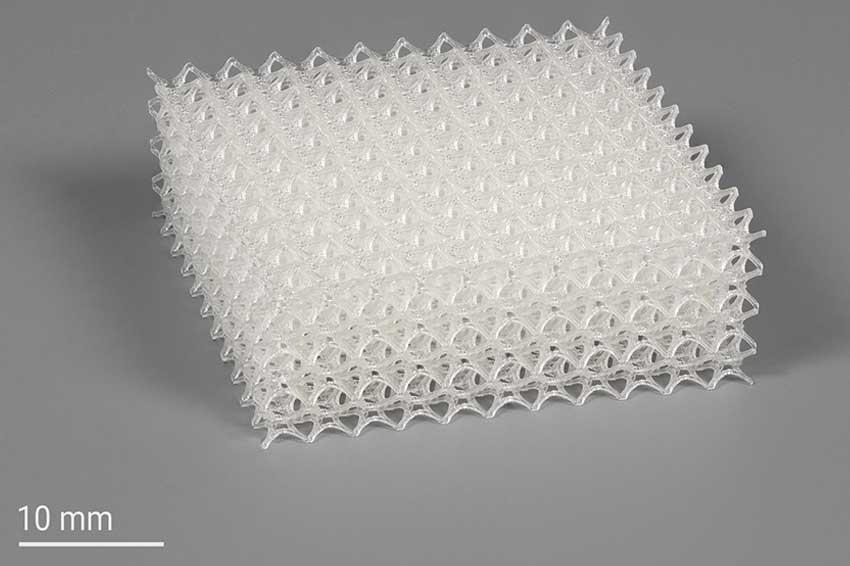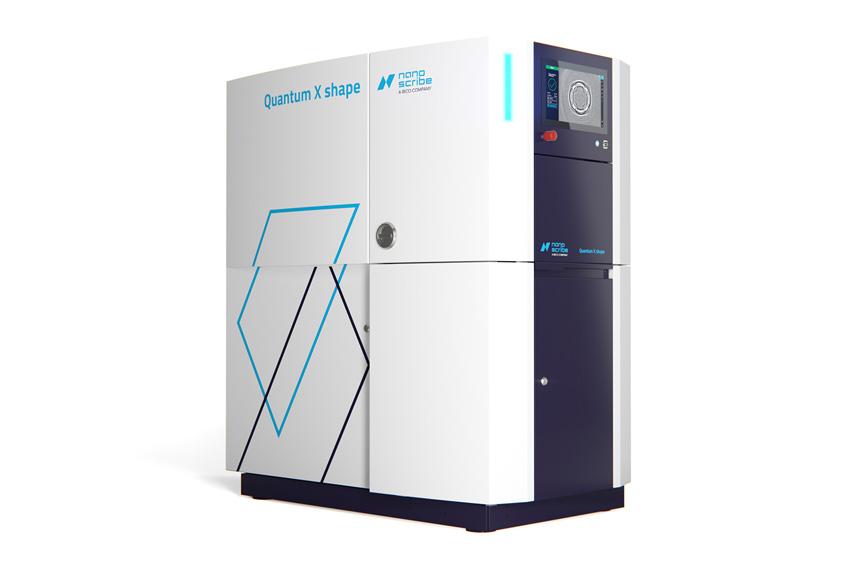3D microfabrication up to the centimeter scale
14.11.2022 - Nanoscribe’s 3D microfabrication range expands to the macroscale while maintaining particularly complex structures and filigree details
Two-photon polymerization (2PP) is a well-known 3D printing technology for high-precision microfabrication. However, until now, 2PP was limited to object sizes of just a few millimeters. Nanoscribe has introduced new capabilities that now extend high-precision 3D printing performance to centimeter-sized objects.
Two-photon polymerization is proven to be at least a hundred times more precise than comparable AM technologies such as high-resolution SLA and DLP or projection microstereolithography (PµSL). One of the main factors that affects the precision in 3D microfabrication is the inherent principles of 2PP which makes use of a photopolymerization that occurs only at the tight laser focus point. The small feature sizes achieved with this technology extend far into the sub-micrometer range. This makes 2PP-based 3D printers suitable for the production of high-resolution and filigree structures with complex geometries. Smooth surfaces, for example for micro-optics, can reach surface roughness of below 10 nm Ra. These capabilities exceed what conventional AM technologies have to offer.
Nanoscribe recently presented a completely new solution for macroscale parts with centimeter dimensions while maintaining 3D design freedom, high precision and filigree details. Combined with new generation 3D printers, the XLF Print Set for extra-large features expands the manufacturing range of nano and microscale structures to millimeter and centimeter-sized objects. At this scale, the precision is typically two to five times higher than comparable microfabrication technologies.
The new capability allows 3D-printing based on two-photon polymerization to close the gap with high-resolution DLP and PµSL. What is more, the new print set provides a much higher volume throughput so that voluminous millimeter and even centimeter-sized objects can be manufactured in batch processes for the first time. Objects up to 30 cm3 can be produced in a single pass.
Quantum X shape belongs to Nanoscribe’s new generation of 2PP-based 3D printers. The printer is intended for 3D microfabrication at four different scales with a total of four different print sets, covering the scale range from submicron, micro, millimeter to centimeter scale. Each print set combines precision optics, printing materials and software, matching each other to enable straightforward printing preparation, execution and results. Thanks to the printer’s straightforward processes and workflows, high-precision 3D printing becomes less error prone and more reproducible, also for beginners. As a consequence, design iteration cycles drastically shorten to accelerate rapid prototyping and entire industrial manufacturing processes.
The new XLF print set contains an air objective lens that offers an increased print field of up to 3,200 µm in diameter and a relatively large working distance of 18.5 mm. Combined with a high laser scanning speed, adjustable voxel sizes and printing parameters, and a highly sensitive photopolymer resin, the print set provides a comprehensive solution for high-precision 3D printing in the millimeter and centimeter range. The new capabilities address the needs of prototyping and manufacturing, for example of mechanical parts such as connectors, housings or gears, microfluidic structures such as nozzles, and many more products. Thanks to the high-precision capabilities of the new print set, lattices and mesh structures with centimeter dimensions can also be printed while maintaining the filigree additive manufacturing offered by two-photon polymerization.
Don’t miss this and other stories in the Focus Section ‘Additive Manufacturing’ of PhotonicsViews 5/2022.
Contact
Nanoscribe GmbH & Co. KG
Hermann-von-Helmholtz-Platz 6
76344 Eggenstein-Leopoldshafen
Germany
+49 721 981 980 0









